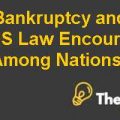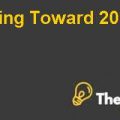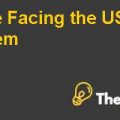Enterprise It At Cisco 2004 Case Solution
Introduction:
Two enthusiastic computer scientists Len Cossack and Sandy Lerner founded Cisco in 1984; the base office of the company is in San Jose, California, the company enjoyed a very high profitability for several years. Cisco has also topped the Forbes list of 20 best performing initial Public Offering of the 1990s. The first product of Cisco was a multiple-protocol router. However, Cisco was not the first company to offer these routers, but Cisco is the first company to be commercially successful with types supporting multiple network protocols. When the various router market starts to decline, Cisco moved into Internet Protocol (IP) router market in which it is quite successful till now.
Cisco followed an aggressive acquisition strategy to bring the innovation and diversity in its products and investment portfolios, in the year 1995-96 Cisco acquired 11 different companies. The positive result of these acquisitions can also be seen from the financial statements of Cisco and the products of these companies are still leading the market. Some of the acquisitions of Cisco are regarded as one of the biggest acquisitions in the industry. In the year 1999 Cisco acquired Ce rent Corporation for $7 billion an acquisition later exceeded by that Scientific Atlanta. Several purchases of Cisco are valued at more than $1 billion including LAN switching business, Enterprise Voice over Internet Protocol (VOID) businesses and home networking company Links.
Significant autonomy was given to the managers in acquisition which prove to be so successful for the company; the compensation of the managers is based on the achievement of their financial targets which also motivates them and put Cisco ahead of its main competitors. In early,the company was valued as the most valuable company in the world, with a market capitalization of more than $500 billion and also in 1999 Cisco has almost 75% share of Internet traffic share.
Answer Number 1:
IT Governance Model of Cisco under Peterson:
Governance model provides the board of directors and senior executives with a set of framework for making the decisions and setting the policies in managing the business. The governance model defines the role and responsibilities of the board of directors, senior management and key employees of the organization. The governance model also receives reports regarding the various sensitive areas such as finance, operations, and risk management. The Governance model is also responsible for the compliance with different laws and regulations.
When Peterson Cisco, IT was an internally oriented cost center. The appointment of Peterson results in the several changes in the fundamental role of IT at Cisco. Separated the IT department from the finance department and merged it into customer advocacy group. He also reallocated the budget of IT department to all the departments of the organization and recognized the IT expenditure from general administrative overheads. Furthermore, he also decentralizes the IT department.
Governance Model used by Peter Solve:
Meritocracies model of governance is employed by Peterson, in this model of governance, the governor maintains tight control over the decision-making process, but he takes the advice and views from the wider range of peoples. The community or employees from which the views are taken, see this project as the effective way of governance. The need for detail formal decision-making process is increased as there is no single individual who makes the decision. The leaders who follow this kind of management model usually receive higher respect from the contributors because they might feel that the manager takes frequent advice and views from the wider range of stakeholders. This style of governance model is also very effective in increasing the authority of leaders because the contributor may agree with the leaders quickly because of their powerful and respectable gesture.
The meritocratic governance model ensures that every member of the team has a feeling that he is participating in the policy and decision-making process. This model provides every member of the team to contribute in the decision making, and process and also every member who participates to the success should have got a reward for his/her contribution. This is done by a different mechanism which improves the visibility of the decision-making process and also in the management of the decisions that were implemented.
Enterprise It At Cisco 2004 Harvard Case Solution & Analysis
Peterson took into account the views of almost every stakeholder who has a legitimate claim over the governance of IT department. This makes it possible for the IT department to contribute to the success of Cisco. The autonomy regarding the IT systems which Peterson has given to the each department head was greatly welcomed by the head of the departments and also motivated them to concentrate on the achievement of their targets. During the tenure of Peter, revenue of Cisco increased drastically, and the reason for this increase is the better motivation and performance of the managers who are responsible for the growth of the business............
This is just a sample partial case solution. Please place the order on the website to order your own originally done case solution.










